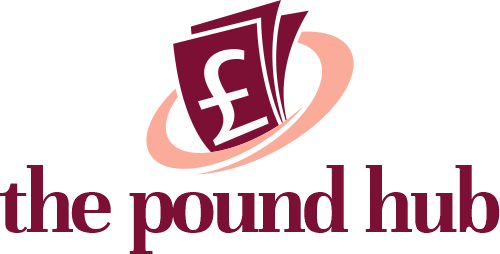- GBP/USD consolidates weekly gains above 1.3250 in the European session.
- The pair’s action is expected to remain subdued on Easter Friday.
- The near-term technical outlook suggests that the bullish bias remains intact.
GBP/USD moves sideways in a tight channel above 1.3250 in the European session on Friday after posting small gains on Thursday. The pair remains on track to end the week in positive territory.
British Pound PRICE This week
The table below shows the percentage change of British Pound (GBP) against listed major currencies this week. British Pound was the strongest against the US Dollar.
| USD | EUR | GBP | JPY | CAD | AUD | NZD | CHF | |
|---|---|---|---|---|---|---|---|---|
| USD | -0.03% | -1.35% | -1.10% | -0.14% | -1.31% | -2.55% | -0.06% | |
| EUR | 0.03% | -0.83% | -0.62% | 0.36% | -0.81% | -2.08% | 0.42% | |
| GBP | 1.35% | 0.83% | 0.62% | 1.18% | 0.02% | -1.26% | 1.26% | |
| JPY | 1.10% | 0.62% | -0.62% | 0.95% | -0.44% | -0.94% | 1.18% | |
| CAD | 0.14% | -0.36% | -1.18% | -0.95% | -1.29% | -2.41% | 0.00% | |
| AUD | 1.31% | 0.81% | -0.02% | 0.44% | 1.29% | -1.27% | 1.24% | |
| NZD | 2.55% | 2.08% | 1.26% | 0.94% | 2.41% | 1.27% | 2.58% | |
| CHF | 0.06% | -0.42% | -1.26% | -1.18% | -0.00% | -1.24% | -2.58% |
The heat map shows percentage changes of major currencies against each other. The base currency is picked from the left column, while the quote currency is picked from the top row. For example, if you pick the British Pound from the left column and move along the horizontal line to the US Dollar, the percentage change displayed in the box will represent GBP (base)/USD (quote).
The US Dollar (USD) Index, which tracks the USD’s performance against a basket of six major currencies, closed marginally higher on Thursday, supported by the upbeat weekly Initial Jobless Claims data. The number of first-time applications for unemployment benefits declined to 215,000 from 224,000 in the previous week.
Despite the USD’s resilience, GBP/USD managed to stick to its modest daily gains as Pound Sterling captured capital outflows out of the Euro.
The European Central Bank (ECB) lowered key rates by 25 basis points (bps) after the April policy meeting, as anticipated. In the post-meeting press conference, ECB President Lagarde refrained from hinting at a pause in policy-easing and acknowledged escalated uncertainty surrounding the Euro area’s economic outlook. EUR/GBP cross lost about 0.5% after the ECB event, helping Pound Sterling hold its ground.
The economic calendar will not offer any high-impact data releases on Friday. With major financial markets remaining closed in observance of the Easter Holiday, the pair is likely to have a difficult time making a decisive move in either direction heading into the weekend.
GBP/USD Technical Analysis

GBP/USD holds above the 20-period Simple Moving Average (SMA) on the 4-hour chart and the Relative Strength Index (RSI) indicator stays above 60, suggesting that the bullish bias remains intact.
On the upside, 1.3280 (static level) aligns as first resistance before 1.3360 (static level) and 1.3400 (static level, round level). Looking south, supports could be seen at 1.3250 (20-period SMA) ahead of 1.3200 (static level) and 1.3160 (static level).
Pound Sterling FAQs
The Pound Sterling (GBP) is the oldest currency in the world (886 AD) and the official currency of the United Kingdom. It is the fourth most traded unit for foreign exchange (FX) in the world, accounting for 12% of all transactions, averaging $630 billion a day, according to 2022 data.
Its key trading pairs are GBP/USD, also known as ‘Cable’, which accounts for 11% of FX, GBP/JPY, or the ‘Dragon’ as it is known by traders (3%), and EUR/GBP (2%). The Pound Sterling is issued by the Bank of England (BoE).
The single most important factor influencing the value of the Pound Sterling is monetary policy decided by the Bank of England. The BoE bases its decisions on whether it has achieved its primary goal of “price stability” – a steady inflation rate of around 2%. Its primary tool for achieving this is the adjustment of interest rates.
When inflation is too high, the BoE will try to rein it in by raising interest rates, making it more expensive for people and businesses to access credit. This is generally positive for GBP, as higher interest rates make the UK a more attractive place for global investors to park their money.
When inflation falls too low it is a sign economic growth is slowing. In this scenario, the BoE will consider lowering interest rates to cheapen credit so businesses will borrow more to invest in growth-generating projects.
Data releases gauge the health of the economy and can impact the value of the Pound Sterling. Indicators such as GDP, Manufacturing and Services PMIs, and employment can all influence the direction of the GBP.
A strong economy is good for Sterling. Not only does it attract more foreign investment but it may encourage the BoE to put up interest rates, which will directly strengthen GBP. Otherwise, if economic data is weak, the Pound Sterling is likely to fall.
Another significant data release for the Pound Sterling is the Trade Balance. This indicator measures the difference between what a country earns from its exports and what it spends on imports over a given period.
If a country produces highly sought-after exports, its currency will benefit purely from the extra demand created from foreign buyers seeking to purchase these goods. Therefore, a positive net Trade Balance strengthens a currency and vice versa for a negative balance.







